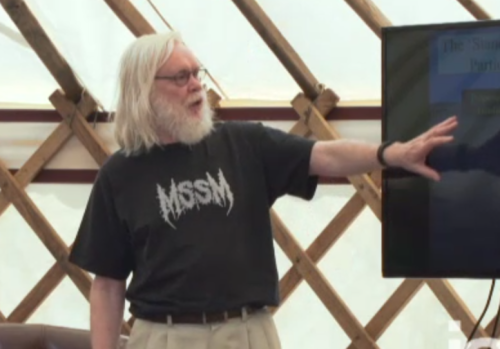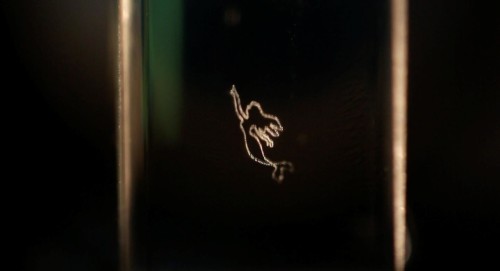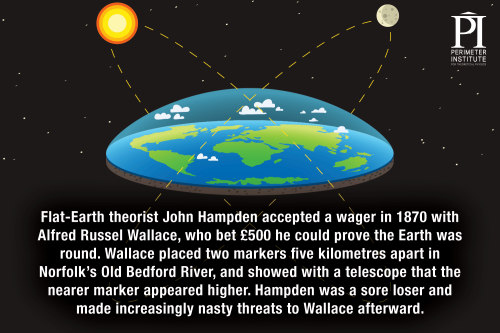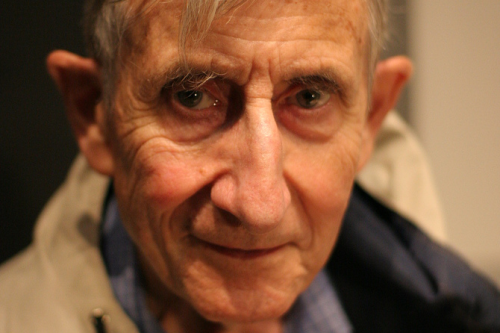Posts by: Hamish Johnston
John Ellis on physics after the Higgs boson, calculating the loudness of the Big Bang, the chemistry of ironing

Looking ahead: John Ellis on the future of particle physics. (Courtesy: IAI TV)
By Hamish Johnston
In 2012 particle physicists gave themselves a giant pat on the back when the Higgs boson was discovered at the Large Hadron Collider at CERN – nearly 50 years after it was first predicted to exist. But what have particle physicists done since, and what does the future hold for the field? In a video called “After the Higgs boson: what’s next for 21st century physics?” from the Institute of Art and Ideas, the theoretical physicist John Ellis charts the future course of particle physics. Pay attention for a joke about the UK’s foreign secretary Boris Johnson.
View all posts by this author | View this author's profile
Hidden Figures behind NASA’s success, LEGO’s famous five women of space, seismic goal in Barcelona

Flight planner: NASA’s Katherine Johnson now has a NASA computational facility named after her. (Courtesy: NASA)
By Hamish Johnston
International Women’s Day was this week and to celebrate, we have published K Renee Horton’s review of the film Hidden Figures and the book by Margot Lee Shetterly that the film is based on. The book and film tell the true stories of African-American female mathematicians who worked at NASA and played a crucial role in America’s race into space during the Cold War. Indeed, they calculated the flight paths that would send Neil Armstrong to the Moon.
View all posts by this author | View this author's profile
A laser-bubble mermaid, ode to seven exoplanets, metallic hydrogen is lost

Tiny bubbles: a laser-made mermaid. (Courtesy: Kota Kumagai/ Utsunomiya University)
By Hamish Johnston
A popular way of melding science and art is to create an image of a mythical being in your lab. Yoshio Hayasaki and colleagues at Utsunomiya University in Japan have made a pretty good likeness of a mermaid using a laser that forms tiny bubbles inside a liquid. “In our display, the microbubble voxels are three-dimensionally generated in a liquid using focused femtosecond laser pulses,” explains team member Kota Kumagai.
View all posts by this author | View this author's profile
She’s the greatest dancer, how to name an element, soccer ball finally orbits Earth
By Hamish Johnston
The award for most bizarre title for a scientific paper goes to psychologist Nick Neave and colleagues at the UK’s Northumbria University and University of Lincoln for “Optimal asymmetry and other motion parameters that characterise high-quality female dance”. The team says it used “a data-driven approach to pinpoint the movements that discriminate female dance quality”. Why, you might ask? “The form and significance of attractive dance, however, has been less well studied, and this limits our understanding of its role in human courtship and partner selection.” The above video is from a previous study by the team about what constitutes a good male dancer.
View all posts by this author | View this author's profile
3D neutrinos on your phone, Hamiltonian: an Irish Musical, is a March for Science a good idea?
By Hamish Johnston
How would you like to explore a giant neutrino detector in 3D from the comfort of your mobile phone? VENu is a new smartphone app that allows you explore the physics underlying the MicroBooNE neutrino detector at Fermilab. Developed by Alistair McLean of New Mexico State University and an international team of physicists, the app is used in conjunction with the Google Cardboard headset to provide users with a virtual-reality experience of MicroBooNE. VENu includes games that offer “brain teasing challenges” including working out how to spot a neutrino event in a busy background of cosmic-ray events. The app can be downloaded free of charge from the Apple Store and the Google Android Marketplace.
View all posts by this author | View this author's profile
Great wagers in physics, CERN’s pine marten gets stuffed, Doomsday Clock moves closer to midnight

Flat out: Wallace saw him coming. (Courtesy: PI)
By Hamish Johnston
I bet you can’t resist clicking on “Great wagers in physics history” – which has been compiled by Colin Hunter at the Perimeter Institute for Theoretical Physics in Canada. A surprising number involve Stephen Hawking, whose record on winning is quite abysmal according to Hunter. Hawking’s fellow Cantabrigian Isaac Newton also enjoyed a flutter and accepted Christopher Wren’s offer of 40 shillings to anyone who could – in two months – derive a force law that explained Keplers laws of planetary motion. Newton succeeded, but ran overtime so he didn’t collect the cash. In the image above you can read about another wager involving a “flat-Earth theorist”.
View all posts by this author | View this author's profile
Live space station upgrade, more zombie physics, T-shirts for LIGO

Working in space: A still image from the NASA spacewalk video. (Courtesy: NASA)
By Hamish Johnston
NASA is live streaming a video of a spacewalk on its Facebook page, and you just might be able to catch it live from the International Space Station – or watch it again. The video shows astronauts Shane Kimbrough and Peggy Whitson upgrading the space station’s power system – and it looks like hard work to me.
View all posts by this author | View this author's profile
Hungry reindeer could mitigate climate change, talking about quantum computing and our breakthroughs of the year

Geoengineering: reindeer can change local albedo. (CC BY-SA 3.0/Alexandre Buisse)
By Hamish Johnston
It’s that time of year when everyone is looking for stories with a Christmassy angle. My colleagues here at IOP Publishing are no exception and they have just put out a press release about some reindeer-related physics. Apparently, hungry reindeer in northern Norway are increasing the albedo of their feeding grounds by eating lots of plants. Albedo is a measure of how much sunlight is reflected back from the surface of the Earth – rather than being absorbed and dissipated as heat – and plays an important role in climate. A worry in the far north is that global warming will lead to greater plant cover – which will reduce albedo and lead to even more warming. Now, it looks like reindeer could help break this cycle. “The effect reindeer grazing can have on albedo and energy balances is potentially large enough to be regionally important,” says Mariska te Beest, from Umeå University in Sweden. “It also points towards herbivore management being a possible tool to combat future warming. Most of the arctic tundra is grazed by either domesticated or wild reindeer, so this is an important finding.”
View all posts by this author | View this author's profile
Waking up to a gravitational wave
By Hamish Johnston
Yesterday we announced the winner of the Physics World 2016 Breakthrough of the Year, which went to the LIGO Scientific Collaboration for its revolutionary, first ever direct observations of gravitational waves. I caught up with six LIGO scientists in the above video Hangout and asked them what it was like when they first realized that they had detected gravitational waves emanating from two coalescing black holes 1.3 billion light-years away.
View all posts by this author | View this author's profile
Freeman Dyson on the physics dream team, Tycho Brahe’s heavy metal, Tintin bags an astronomical sum

Mr Freeman Dyson: “so lucky” not to have a PhD. (CC BY-SA 2.0/Jacob Appelbaum)
By Hamish Johnston
What would it be like to have known Hans Bethe, Wolfgang Pauli, Robert Oppenheimer and Richard Feynman? One person who can tell is the theoretical physicist Freeman Dyson, who recounts his extraordinary life in an interview in Nautilus entitled “My life with the physics dream team”. Born in the UK, he got a degree in mathematics at the University of Cambridge before embarking on a PhD with Bethe at Cornell. Remarkably, Dyson did not complete his doctorate – something he seems rather pleased with: “I was so lucky. I slipped through the cracks.”
View all posts by this author | View this author's profile